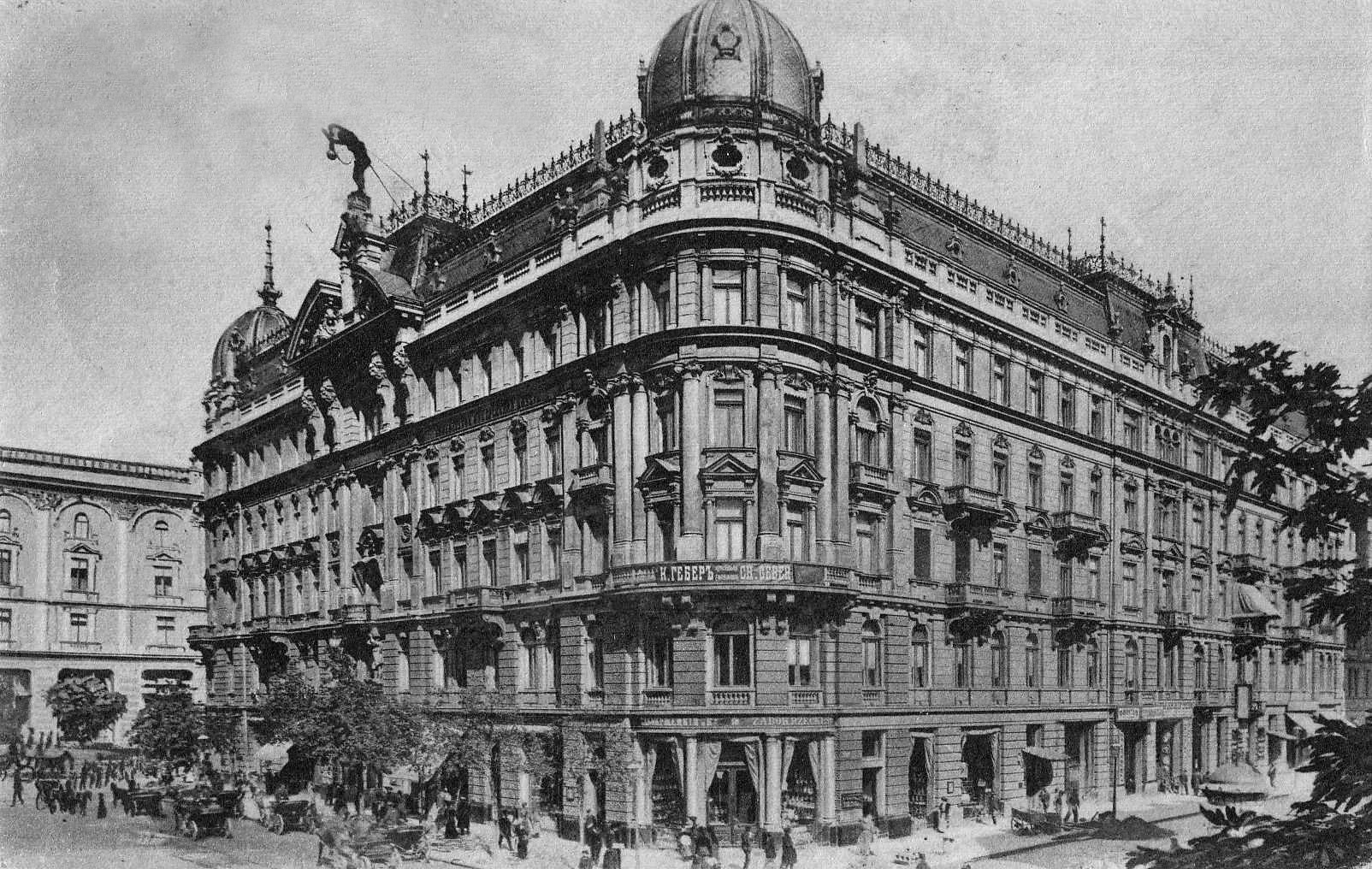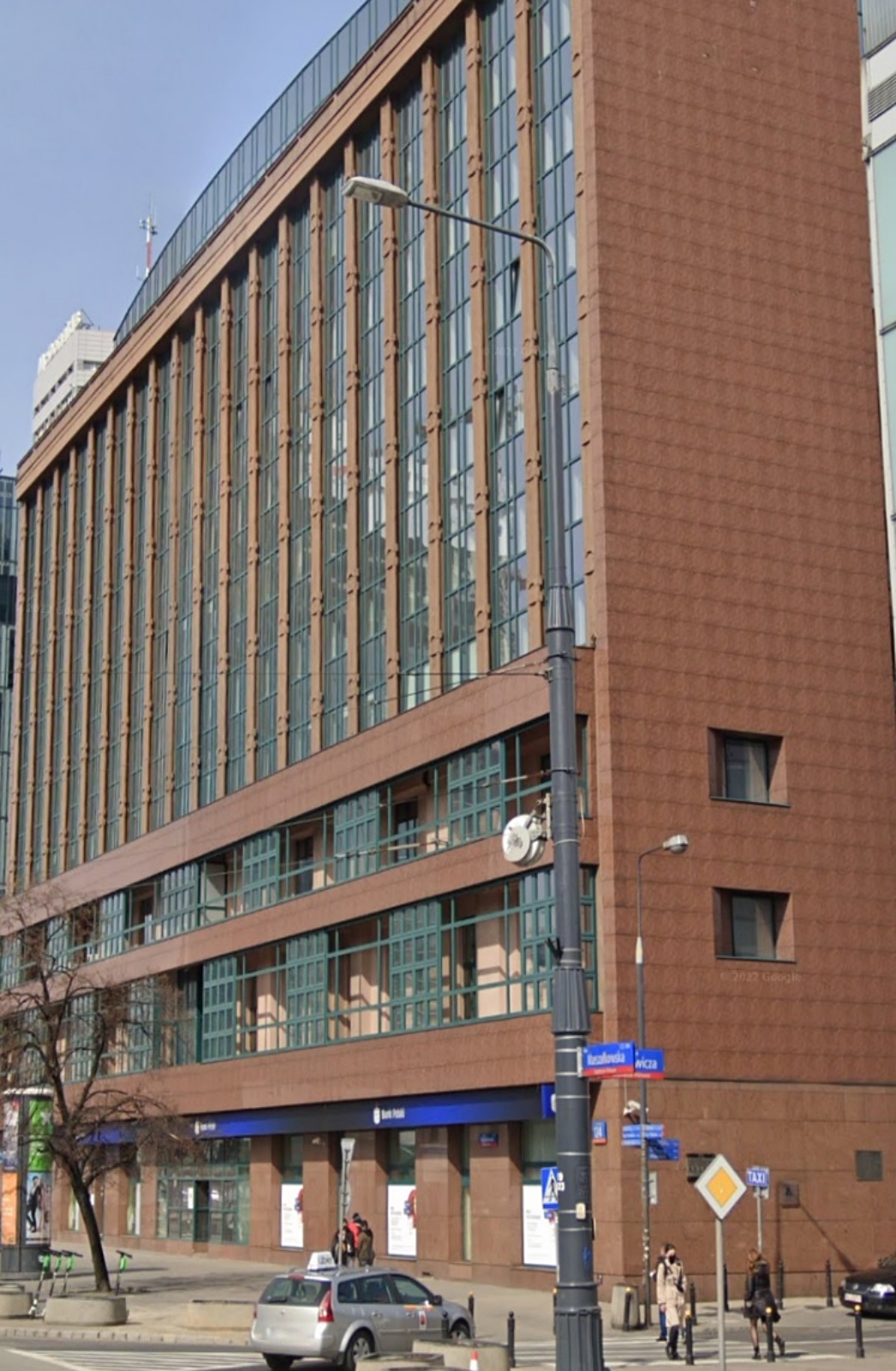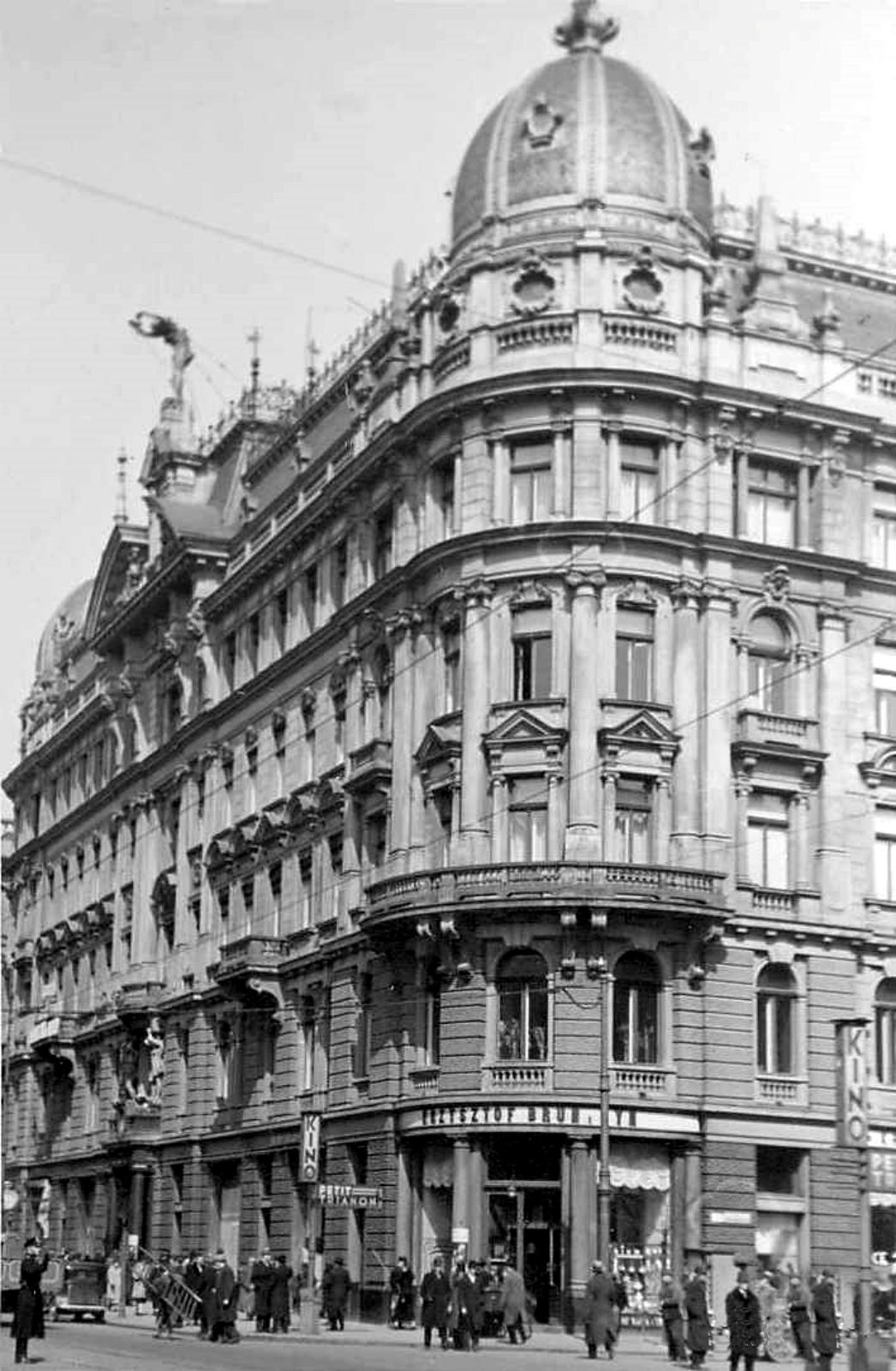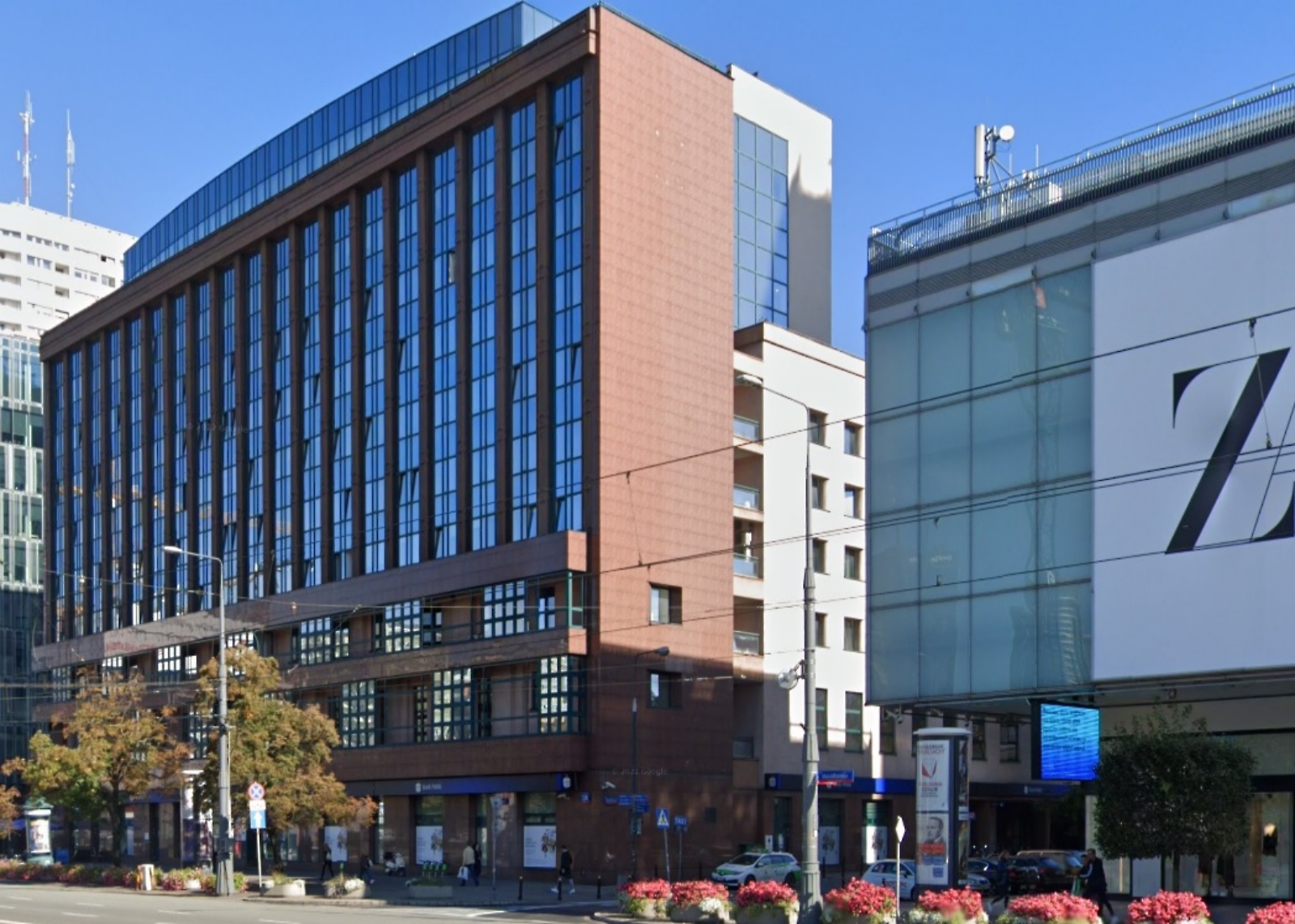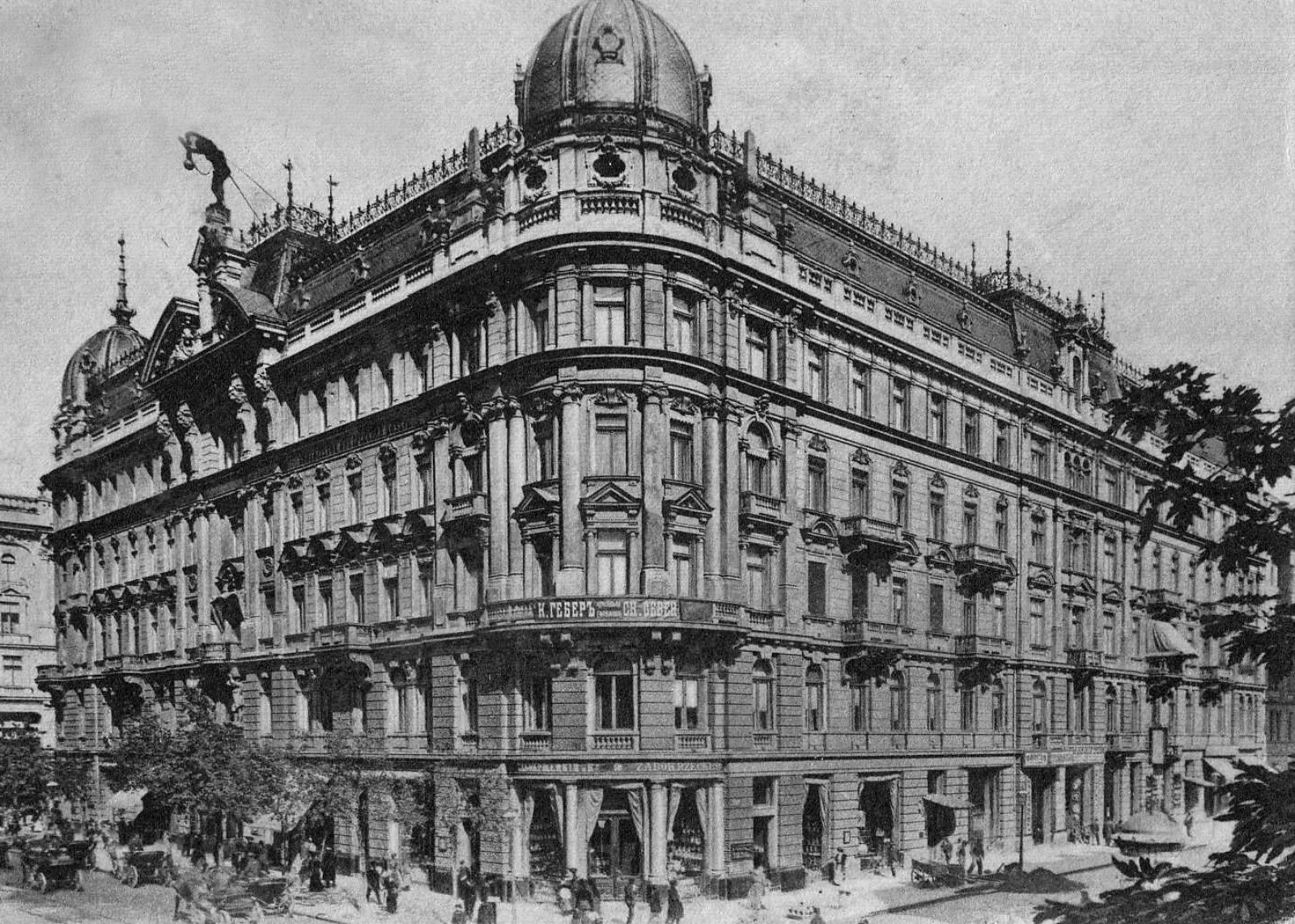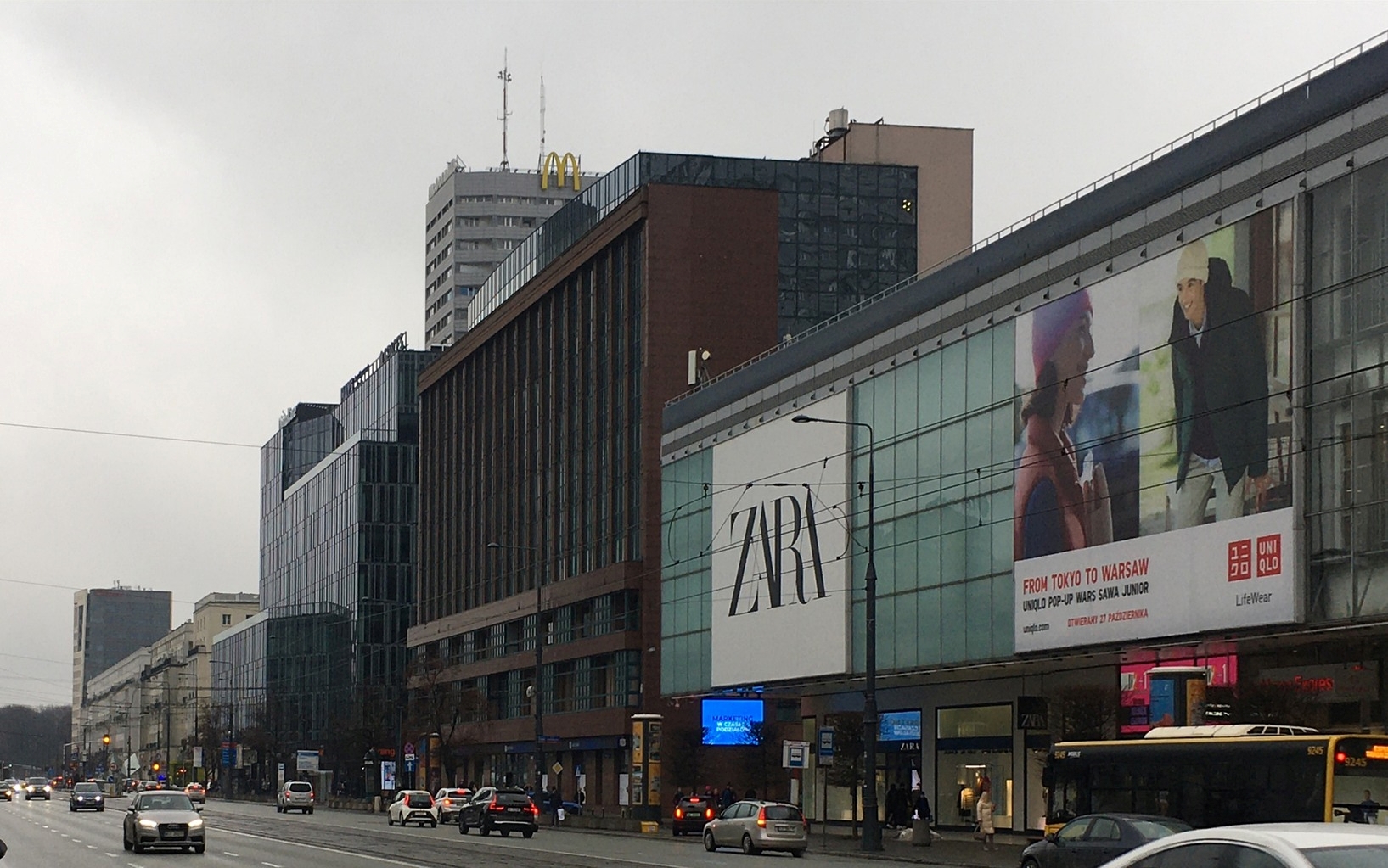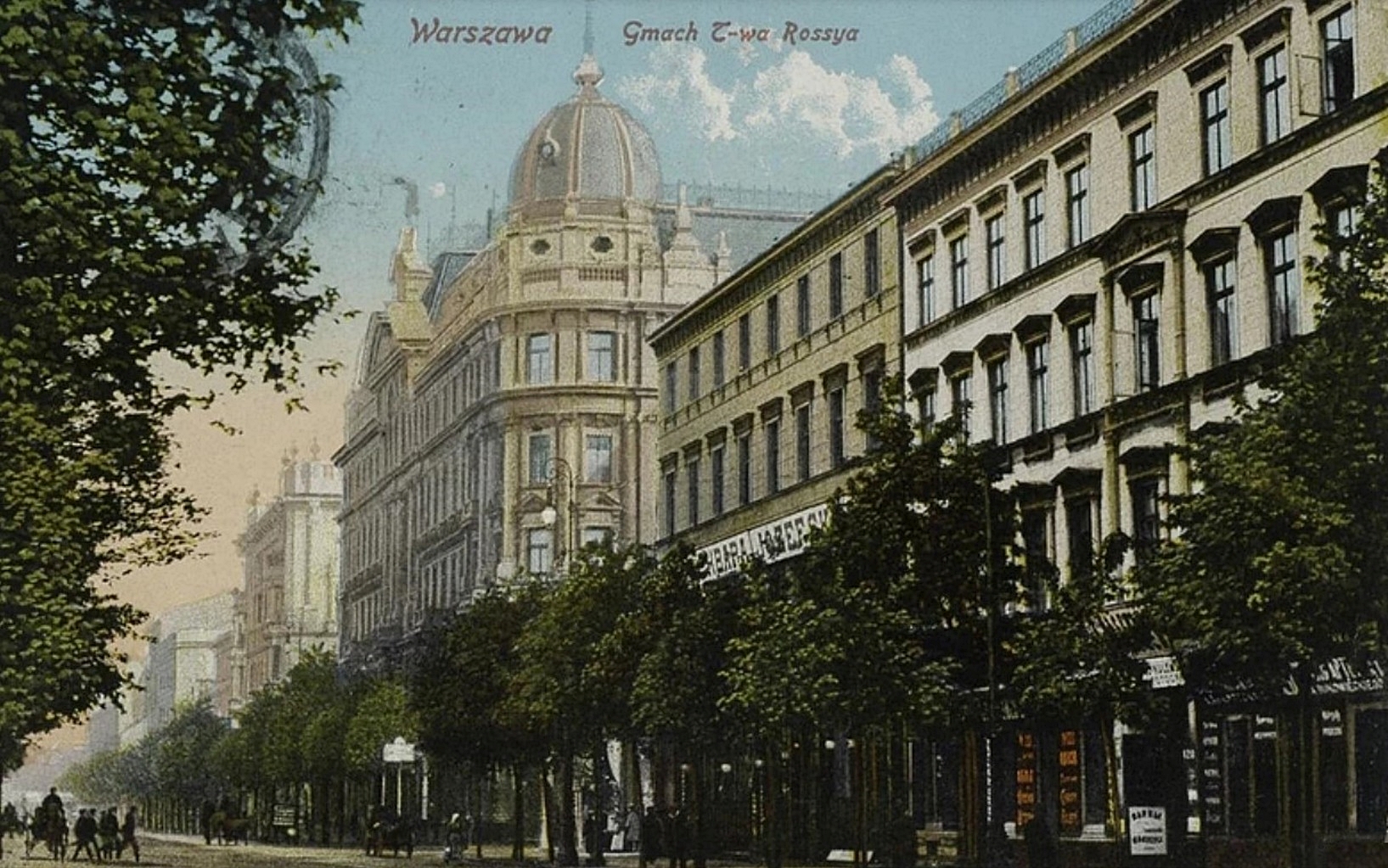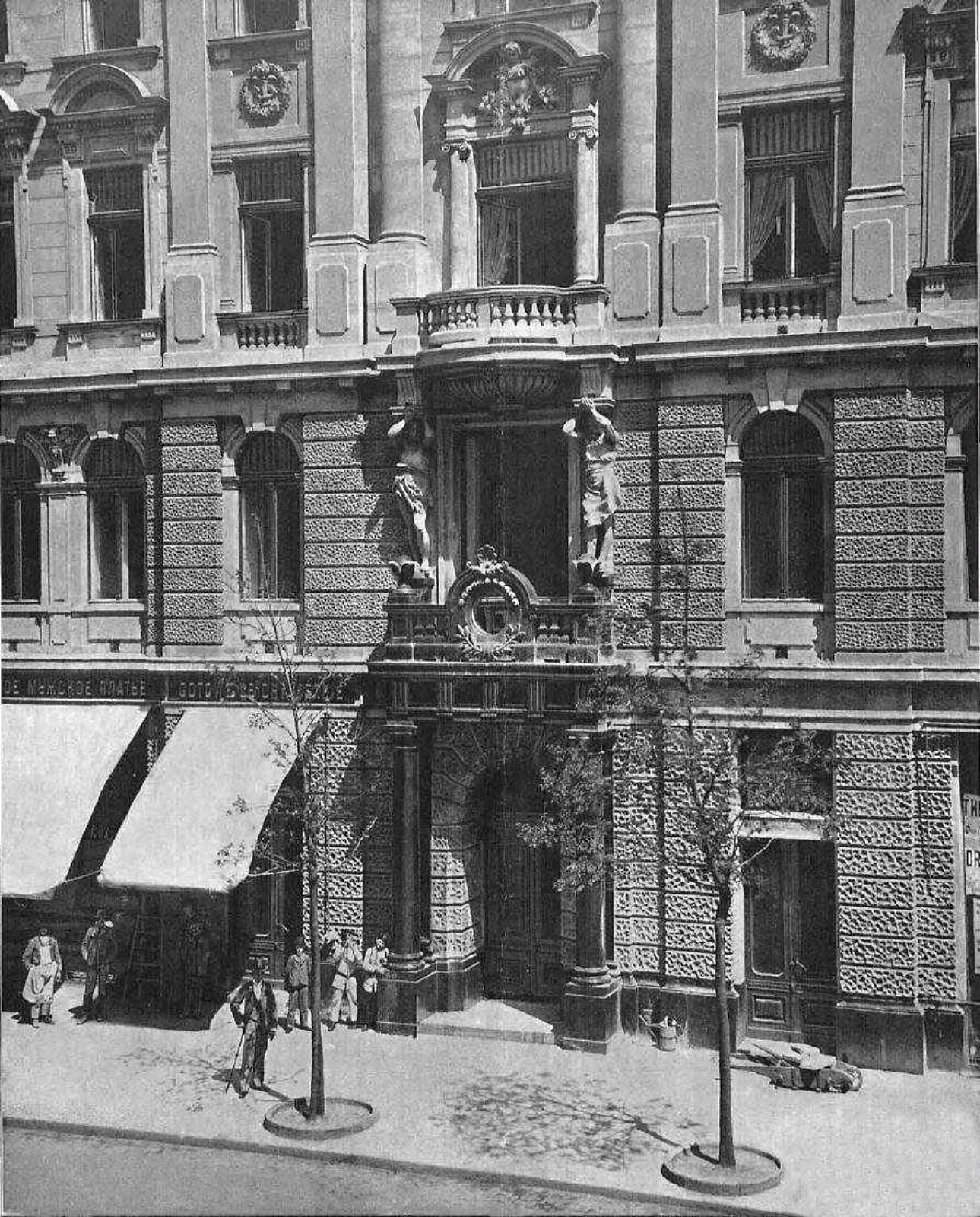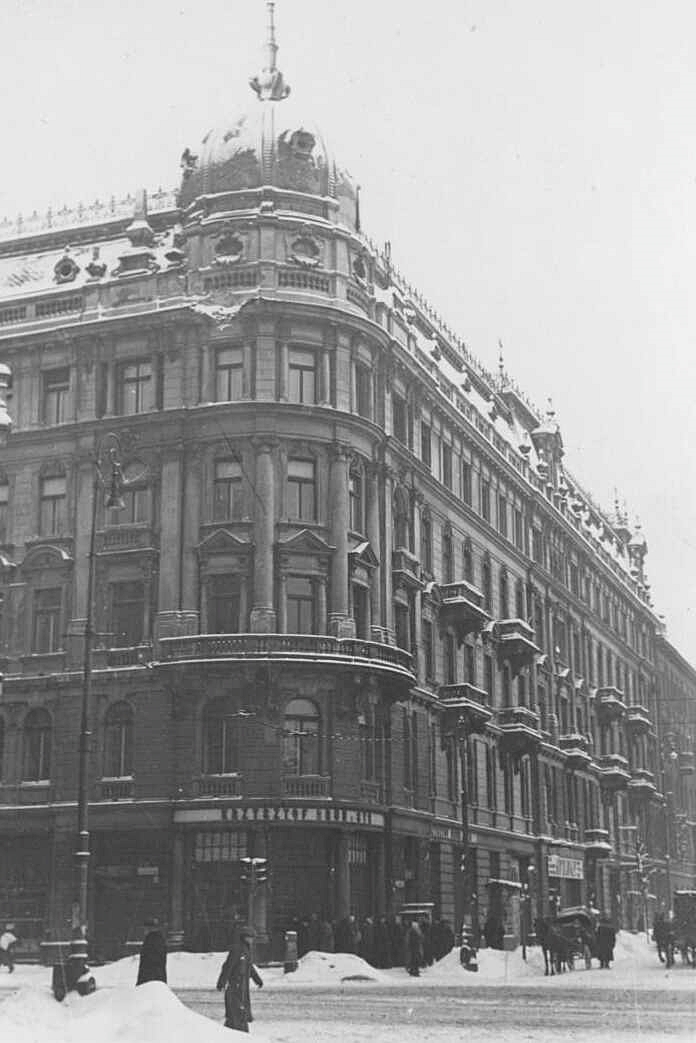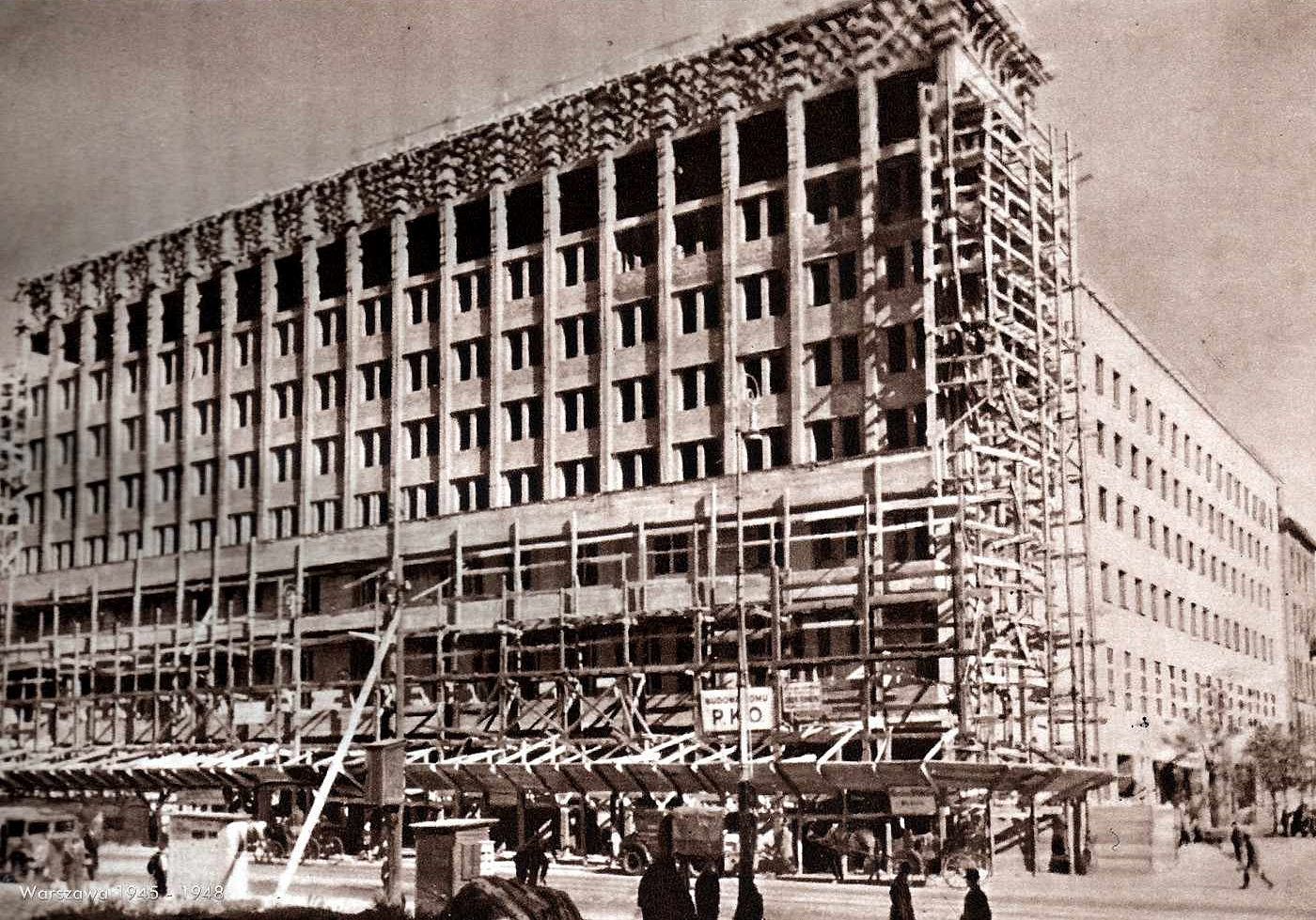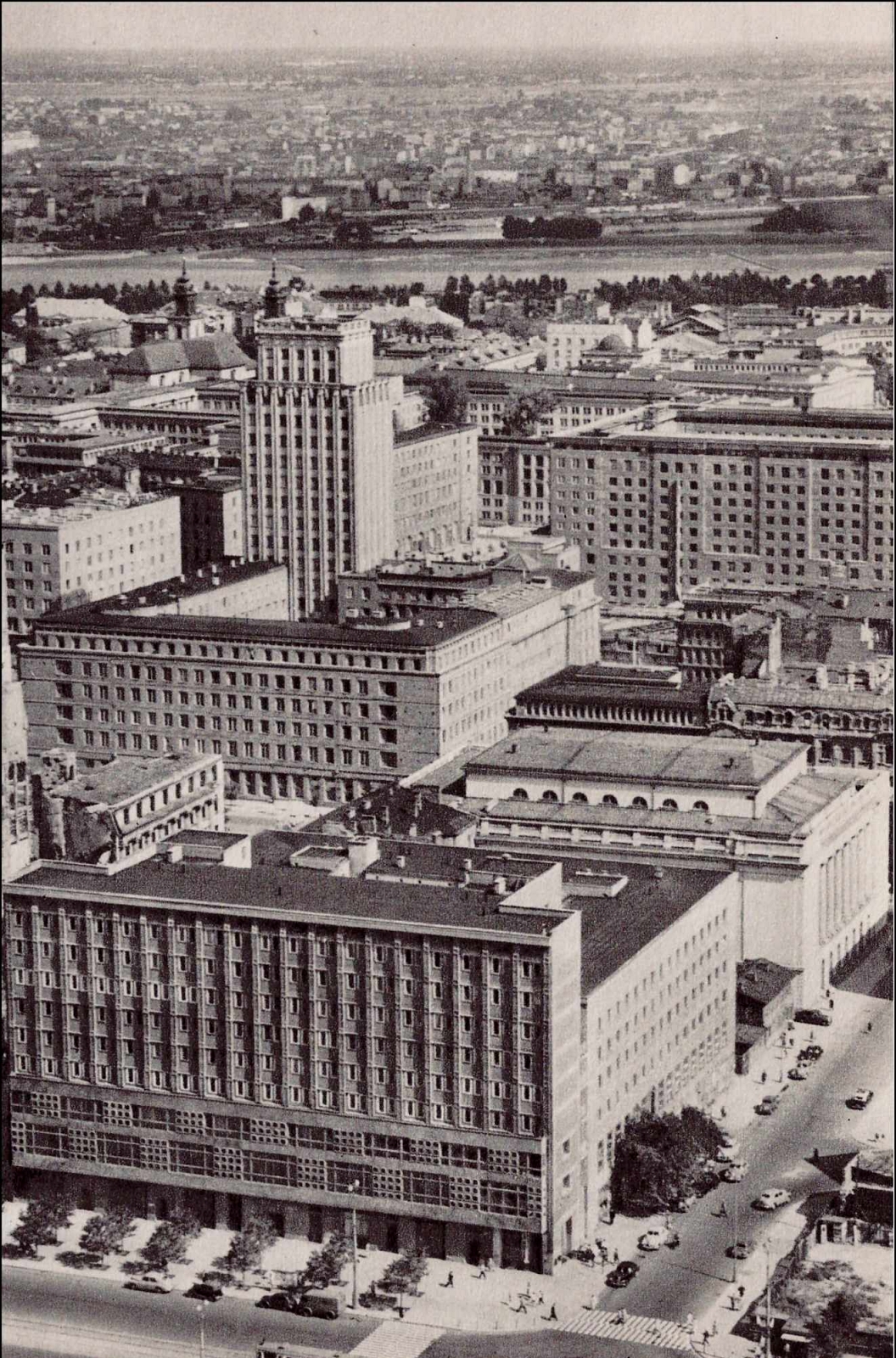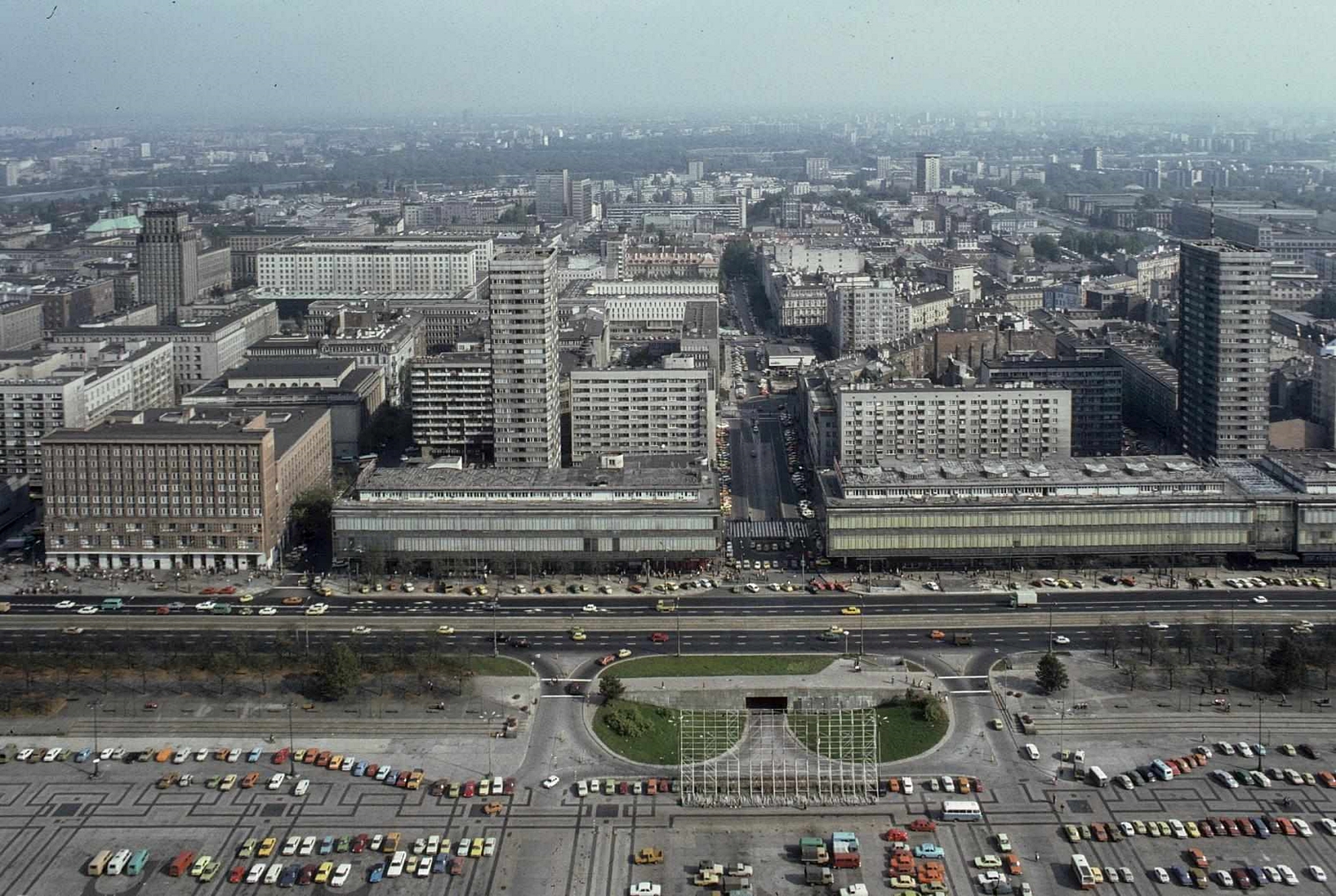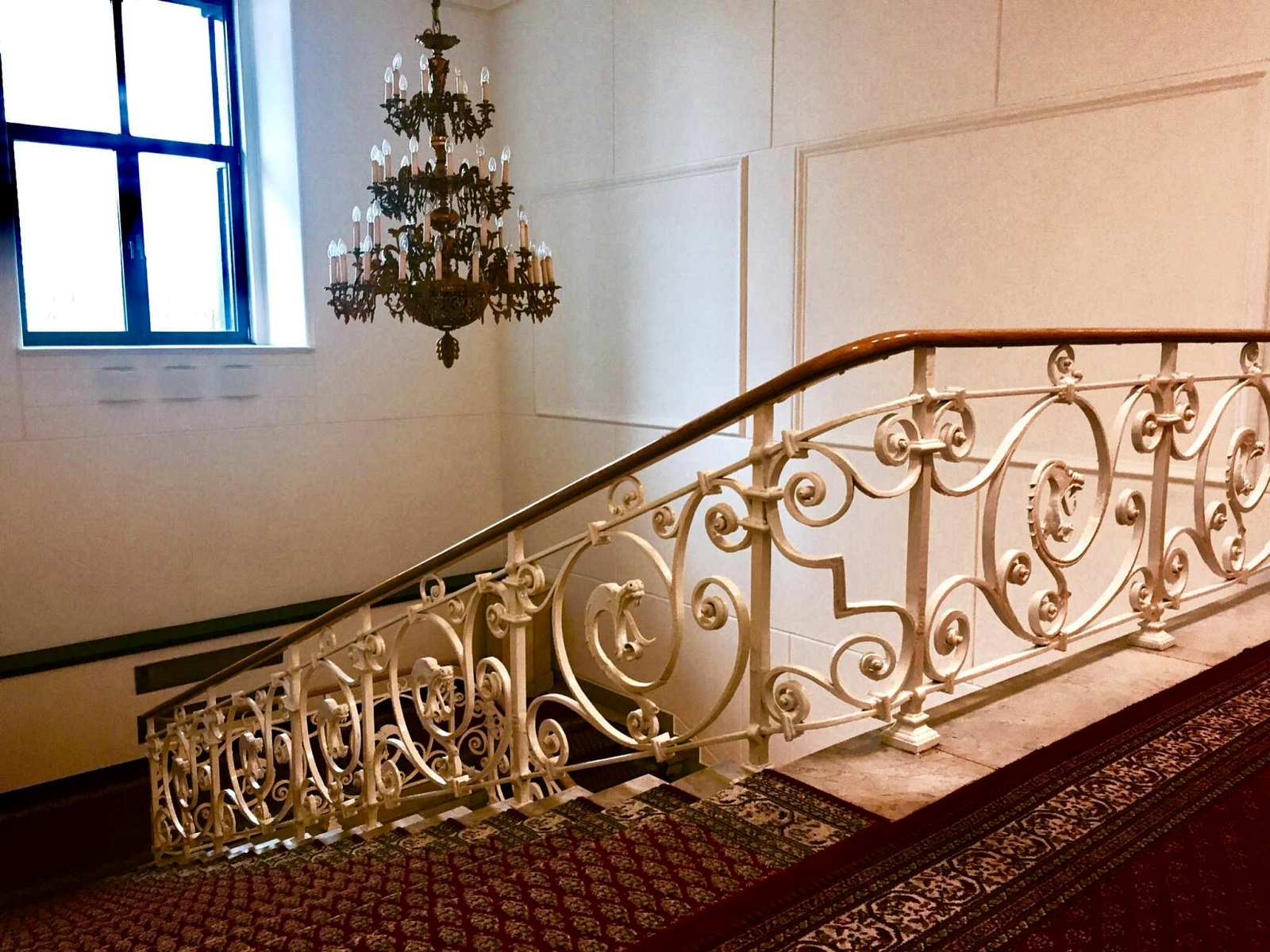The House of the “Russia” Insurance Company was one of the most beautiful buildings in pre-war Warsaw. The building was a dominant feature of this part of Marszałkowska Street, which to a great extent created the image of the pre-war capital, the one recalled today with nostalgia and identified with the magnificent metropolitan times, which are often longed for, especially in the context of the nearby capitals of Prague, Budapest or Vienna, which have survived without major destruction
In its pre-war reality, the building greatly created the character, scale and atmosphere of the former Marszałkowska Street. Its details, such as the twin helmets on the corners, the allegory of electricity in the middle or the French mansard roof, became a favourite motif of postcards presenting this part of the city between 1900 and 1939
Beg. 1920s, Marszałkowska Street and the House of the “Russia” Insurance Company. Source: Polona National Digital Library
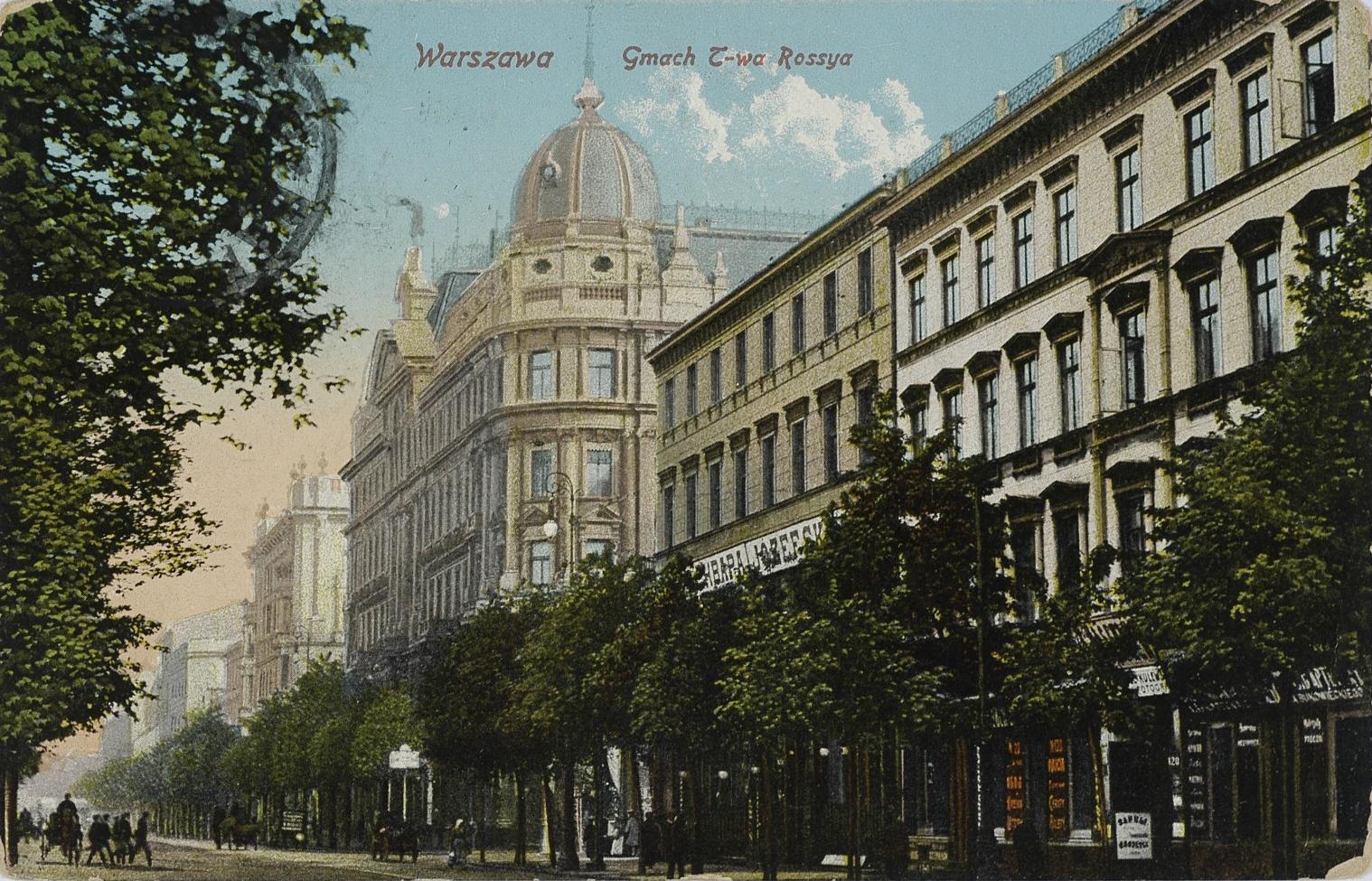
The building was constructed in 1898-1899. The original design, prepared by Piotr Brukalski, a graduate of the Imperial Academy of Fine Arts in St. Petersburg, and Otto Gehlig, a German architect connected with Lodz, was modified – similarly to the Bristol Hotel, which we wrote about HERE – by the architect Władysław Marconi. The building’s architecture is a combination of modern technology with elements of the Italian and French Renaissance. The building was regarded as one of the best examples of turn-of-the-century metropolitan architecture. The streets of the largest and most elegant European cities would be proud of such a building. In addition to offices, the building housed, among other things, large-format shops on the ground floor. The Insurance Company occupied a representative first floor, with an entrance and staircase from Marszałkowska Street
The building just before the war and today. Source: Google Maps and the National Archive in Warsaw
The building circa 1916 and today. View of the building from the corner of Moniuszki and Marszałkowska Streets. Source: Google Maps and Public domain, via Wikimedia Commons
Post. 20th century and today, Marszałkowska Street and the building of the “Russia” Insurance Company. Photo: whiteMAD/Mateusz Markowski and Polon Digital National Library
The building did not suffer during the defence of Warsaw in September 1939. It was set on fire by the Germans in 1944 after the end of the Warsaw Uprising. Between 1948 and 1950, the PKO building was erected in its place, designed by Bohdan Lachert. The burnt-out building of the “Russia” Insurance Company was mostly demolished, leaving only the ground floor and two floors on the Marszałkowska side. Then several new floors, lower than the previous ones, were added, the façade of the building was smoothed out, and the surviving floors were covered with an openwork structure with openings, which contributed to the name “the house under the toilet seats” given to it by Warsaw residents. At the end of the 1990s, the façade of the building was changed, removing the post-war ‘toilet seat’ openings. The staircase is the only remnant of the former building of the “Russia” Insurance Company (among other things, marble stairs and wrought iron railings have survived)
Source: dioblina.eu, varsavianista.pl, forumrozwoju.waw.pl
Read also: Architecture | Tenement | Modernism | City | Warsaw | Architecture in Poland

